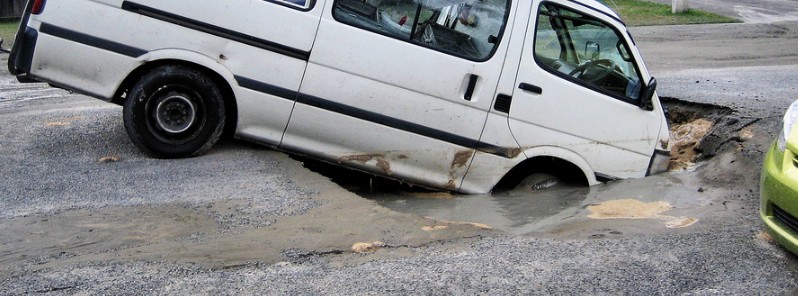Mapping areas at risk from liquefaction

A team of researchers has joined forces to investigate and find solutions to tackle one of the most devastating forms of seismic phenomena – liquefaction.
Liquefaction occurs in loosely-compacted sandy soils which are fully saturated with water. Seismic vibrations caused by an earthquake apply stress to the soil particles and this transfers pressure to the soil water, pushing the soil particles apart and causing the soil to behave like a liquid.
Over the past decade, earthquakes have proved to be the deadliest of all natural disasters in Europe, with hundreds of fatalities and huge economic losses. Around half of these economic losses were caused by earthquakes that led to an Earthquake-Induced Liquefaction Disaster (EILD).
The LIQUEFACT project, which has received €4.9 million in funding, is led by academics at Anglia Ruskin University and involves partners from universities in European countries particularly susceptible to earthquakes: the University of Porto in Portugal; the University of Pavia, the University of Cassino and Southern Lazio, and the University of Naples Federico II in Italy; the University of Ljubljana in Slovenia; and the University of Istanbul in Turkey.
The main aims of the LIQUEFACT project are to:
- Map the areas of Europe where liquefaction is most likely to happen, looking at seismology, groundwater, and geology.
- Produce a simplified means of evaluating the vulnerability of buildings on a scale of zero to five.
- Produce a framework to assess a particular building and identify the best ways to mitigate against liquefaction.
- Assess a community's resilience to liquefaction-induced disasters, on both a societal and structural level.
- Dr. Esther Norton, Deputy Head of Anglia Ruskin University's Engineering and the Built Environment department and a geotechnics expert, said: "If you have a building on this type of strata when an earthquake happens, it will literally be floating on a liquid rather than being on solid ground.
"Regardless of how well constructed a building might be, it can just topple over. Since Earthquake-Induced Liquefaction Disasters generally happen near water, you will find that harbor walls fail due to lateral displacement and bridges collapse as the soil beneath the piers loses all bearing capacity.
"A lot of research into liquefaction has been carried out after events in Niigata, Japan, in the 1960s through to Christchurch, New Zealand, in 2011. However, there has been very little focus on the way a community can improve its resilience to such an event, which is where LIQUEFACT comes in.
"It's to do with ways of preparing communities to be resilient in the face of an Earthquake-Induced Liquefaction Disaster. So we are looking at critical infrastructure and coming up with ways of assessing vulnerability, mitigating the risks and improving the community's resilience."

The LIQUEFACT project is funded by the EU under its Horizon 2020 Research and Innovation programme and runs until October 2019.
Provided by Anglia Ruskin University
Featured image: Sinkholes and liquefaction on roads – North New Brighton center in Christchurch, New Zealand. Credit: Martin Luff

Commenting rules and guidelines
We value the thoughts and opinions of our readers and welcome healthy discussions on our website. In order to maintain a respectful and positive community, we ask that all commenters follow these rules.